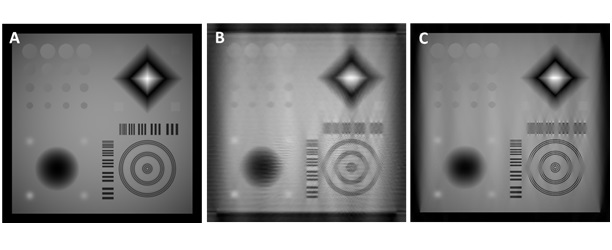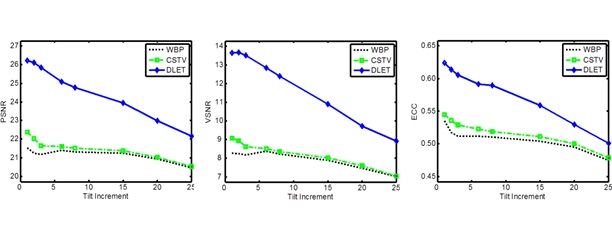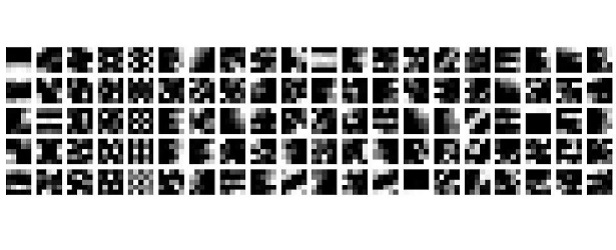IT-10-P-3301 Improved Electron Tomography Image Reconstruction usingCompressed Sensing based Adaptive Dictionaries.
Electron tomography (ET) is an important technique for studying the 3D morphologies of nanostructures using the electron microscope. ET involves the collection of a series of 2D projections over a wide tilt range, which are subsequently aligned and processed to obtain a 3D volume reconstruction. It is well known that the quality of the reconstruction obtained using established algorithms is significantly affected by artifacts when the maximum angular range (the “missing wedge” artefact) or the number of acquired projections is limited. The reconstruction quality can be enhanced by including additional prior knowledge about the specimen in the reconstruction process and this is the key point of the compressive sensing (CS) family of techniques[1]. Such approaches have recently been applied to ET[2] and showed excellent results with higher fidelity and reduced artefacts even with subsampled datasets. Such features give CS major advantages for ET such as reducing total irradiation dose. The key prior knowledge employed in CS is that the signal (i.e. images), needs to be sparse in a transform domain. If a suitable transform enables a sparse representation of the dataset, then the original signal can be accurately reconstructed from a significantly smaller set of measurements than that required by the classical sampling theorem. As sparsity is a key requirement for an accurate reconstruction, researchers have investigated a range of sparsifying transforms, including for ET. In spite of their success in some cases, such transforms may not apply for all cases (nanostructured objects), and real signals are not always compressible (sparse) in such transforms. Also, some sparsifying transforms have a limited ability to remove artifacts. One common sparsifying transform is Total Variation (TV). It is only effective for those samples that are well described in terms of sharp, discrete boundaries. Other drawbacks of using TV include over-smoothing of fine structures and the inability to separate true structures from noise. Consequently, it is essential to seek superior transforms. In this work, we propose an alternative image reconstruction algorithm for ET that learns the sparsifying transform adaptively (in a similar manner to how our visual cortex processes natural images[3]). This new technique ET data with higher fidelity than analytically based CS reconstruction algorithms. The proposed technique is tested using a simulated phantom, which is known to be difficult to reconstruct using the popular CS-TV techniques, together with an experimental tilt series from a polymer solar cell.
References
[1] Donoho, D.2006. IEEE T Inform Theory, 52 1289–1306.
[2] Saghi, Z. et al.2011 Nano Lett. 11 4666–4673
[3] Olshausen, A.et al. 1996 Nature. 381 607–609
This research was supported by a Lord Kelvin Adam Smith Scholarship of the University of Glasgow.


